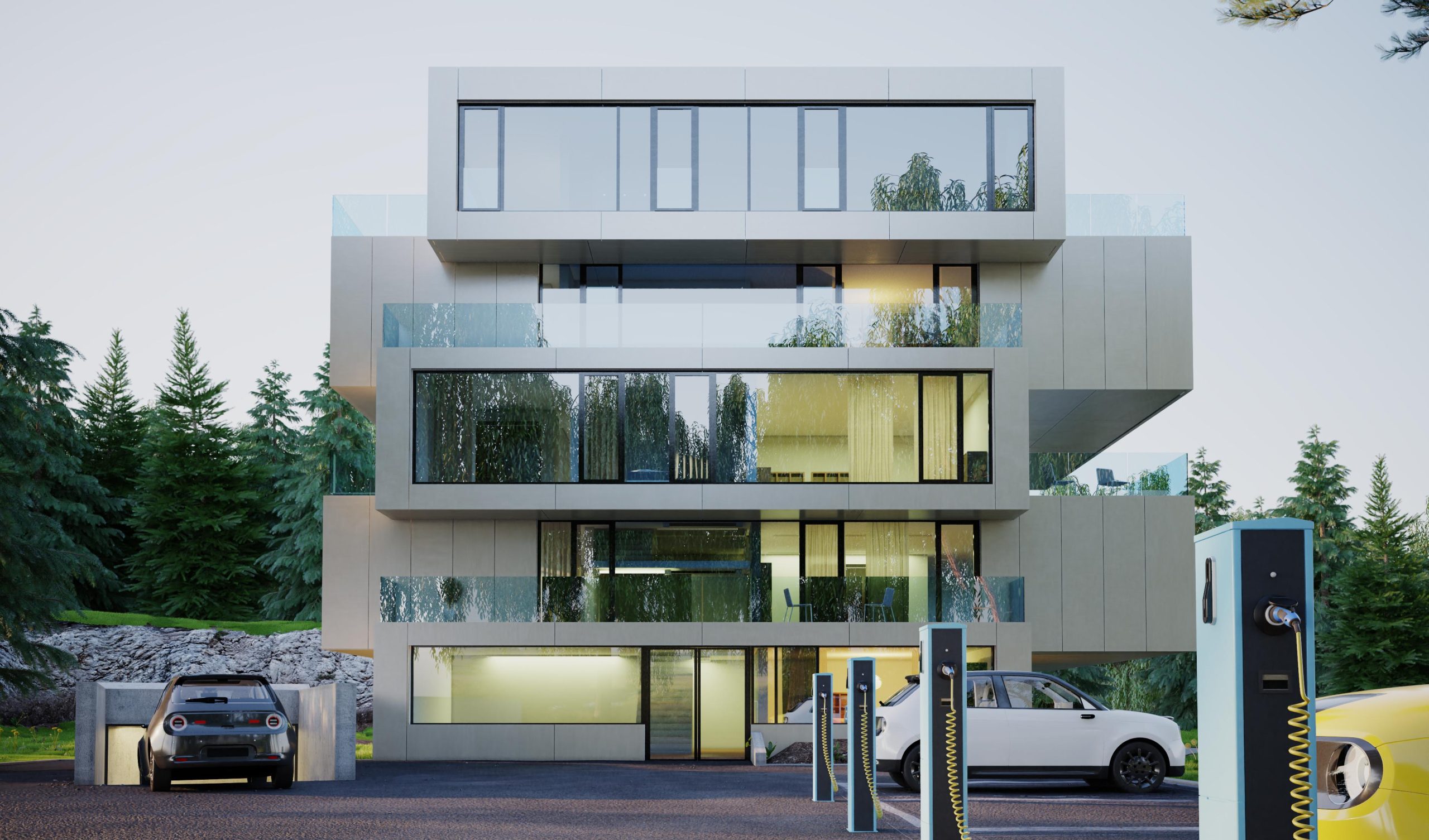What Does Duplex House Mean? Types and Room Layouts Explained
Table Of Contents
Homebuyers today seek more than just space; they look for smart layouts that combine privacy, flexibility, and value. Among the many housing types available in India, the duplex in-house category has become increasingly popular. It blends the independence of a bungalow with the practicality of an apartment.To make an informed choice, it’s important to understand the concept of a duplex house and how it compares with flats or rooms.
What Is a Duplex House?
A duplex is a residential building that features two homes built either one above the other or side by side, connected internally by a staircase. In simple terms, the meaning refers to a two-story house within a single unit that allows one family to occupy both levels or, in some cases, two families to share the same structure with separate living spaces.
To better understand what is meant by a duplex house, think of a layout where the living area and kitchen are on the ground floor, while bedrooms are on the upper level, offering privacy and convenience. In Indian housing, the duplex in-house concept provides the spacious feel of a villa while being more affordable and easier to maintain. Builders often use the term duplex flat for premium apartments with internal stairs connecting two levels, while the meaning refers to a single accommodation that spans two connected floors for a more open and airy living experience.
Key Features That Make a Duplex House Unique
Every duplex structure offers a distinct lifestyle experience. Here are the defining duplex characteristics that make these homes stand out:
- Multi-level living: The most noticeable aspect is its vertical design, offering separate areas for relaxation, work, and social gatherings.
- Private entrance: Most duplexes have an independent entry point, giving residents a sense of exclusivity.
- Separate units: In some designs, the upper and lower floors can be divided to accommodate two families while maintaining privacy.
- Spacious layouts: Duplexes often feature open-plan living spaces, larger bedrooms, and extended balconies.
- Better light and ventilation: With windows on both levels, they enjoy improved airflow and natural light compared to compact flats.
Types of Duplex Houses
The duplex types available in India vary depending on design preferences, land availability, and budget. Builders use different layouts to meet diverse buyer needs, from modern city houses to suburban houses.
Standard Duplex House
A standard duplex house typically includes two floors connected by an internal staircase. The ground level houses common areas like the living room, dining space, and kitchen, while the upper floor includes bedrooms. This design is the most popular in urban residential layouts.
Low-Rise Duplex
A low-rise duplex is built within a small residential complex, often featuring limited floors. It combines the benefits of flat living with the privacy of an independent house. These units are common in cities where land is scarce.
Ground Duplex House
In a ground duplex house, both floors are part of the lower structure, often extending partially below ground level or on an extended ground floor. It’s ideal for those who prefer direct garden or terrace access.
Side-by-Side Duplex
The side-by-side duplex design includes two homes built next to each other, sharing a common wall but with separate entrances. This format is perfect for joint families who want proximity yet personal space.
Front-Back Duplex
A front-back duplex divides the property into two separate homes placed one behind the other. Both have independent entrances, ensuring privacy while optimising land use. Each Indian duplex style caters to different living needs, offering flexibility in layout, functionality, and budget.
Duplex House vs Flats and Rooms
When comparing duplex vs flat, the most evident difference is in design and ownership style. A duplex in a house offers two connected levels within a single property, while a flat is a single-level unit within a multi-storey building.
Here’s how they differ:
- Space: A duplex provides more living area and private zones, while a flat offers compact, single-floor convenience.
- Ownership: Flats are part of large housing societies, whereas duplexes often come with partial land ownership or more autonomy.
- Maintenance: Flats usually have shared maintenance costs, while duplex owners manage their own upkeep.
- Privacy: Duplexes provide greater seclusion, with fewer shared walls and entryways. In essence, the difference between duplex and flat lies in design depth, lifestyle, and ownership experience.
Duplex House Design and Construction Costs in India
Designing and building a duplex house requires careful planning, as costs depend on factors such as location, layout, materials, and amenities. When exploring duplex design, architects in India often optimise for functionality, natural light, and open layouts.
Depending on the city, location, and quality of finishing materials, a duplex layout cost can vary and may start at around Rs 1,500 per sq. ft. for basic finishes. Some of our residential projects offer two-level homes within thoughtfully planned communities, such as Elara Celestia in Bangalore, which provides luxury 3, and 4 BHK flats with duplex-style living.
Pros and Cons of a Duplex House
| Aspect | Pros | Cons |
| Investment | Good resale value and rental potential | Higher initial construction and furnishing cost |
| Space | Offers a larger living area than a standard 2 or 3 BHK flat, typically starting from around 1,500 to 2,500 sq. ft., with separate floors ensuring privacy and comfort. | Requires more maintenance and higher upkeep costs compared to compact apartments. |
| Privacy | Limited shared walls, private entrance | Better suited for families than individuals who prefer smaller spaces. |
| Flexibility | Can house two families or rent one unit | Managing tenants or shared use can be challenging |
| Design | Open layouts, better ventilation | Design limitations in small plots |
| Maintenance | Independent upkeep and control | The entire responsibility of the owner |
Balancing Budget and Design for Your Duplex Project
A duplex offers a refined way of living that balances privacy, space, and value. For homebuyers wondering what a duplex house is, it represents an intelligent middle ground between flats and villas. Whether you’re exploring a duplex flat for modern city living or understanding the meaning behind it for investment, these homes provide flexibility and long-term benefits.
In a growing market like India’s, where family needs evolve and urban spaces shrink, the duplex in-house model continues to be a practical and aspirational choice. Its versatile design ensures comfort today while holding strong potential for tomorrow.
FAQs
1. What is meant by duplex house?
A duplex house is a residential building divided into two separate units, often stacked or side-by-side. Each unit has its own entrance and living spaces.
2. What is a 2 BHK duplex?
A 2 BHK duplex is a two-storey home featuring two bedrooms, a hall, and a kitchen. It provides more space and privacy compared to a standard flat.
3. Which is better: flat or duplex?
A duplex offers more space, privacy, and flexibility, while a flat is easier to maintain and often more affordable. Choice depends on lifestyle and budget.
4. Why is it called a duplex?
It is called a duplex because the building is split into two separate living units. The term “duplex” comes from Latin, meaning “double.”
5. What are the three types of duplex?
The three types of duplexes are standard, low-rise and ground duplex houses. Each type differs in layout and access between units.
6. What is a duplex apartment?
A duplex apartment is a multi-storey apartment with internal stairs connecting two floors. It offers the feel of a house within an apartment complex.
7. How many rooms are in a duplex?
The number of rooms in a duplex varies, but typically includes 2–4 bedrooms, a hall, a kitchen, and bathrooms. Layout depends on design and size.
Disclaimer: The information provided in this article is generic and is shared for informational purposes only. It is not a substitute for specific advice in your circumstances. You are recommended to obtain specific professional advice before you take any action/decision. The content is subject to change due to updates in laws or regulations hence you are recommended to check the information before taking an action/decision. L&T Realty does not claim that the information given in this article is completely true and accurate.


